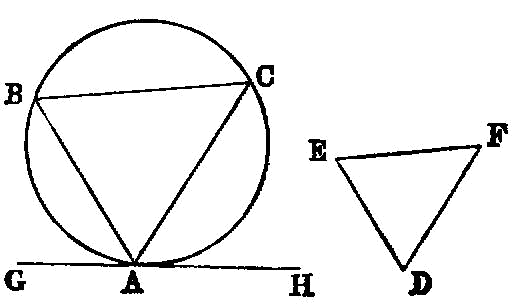Proposition 4.2

In a given circle to inscribe a triangle equiangular with a given triangle.
Let ABC be the given circle, and DEF the given triangle; thus it is required to inscribe in the circle ABC a triangle equiangular with the triangle DEF.
Let GH be drawn touching the circle ABC at A [III. 16, Por.];
Then, since a straight line AH touches the circle ABC, and from the point of contact at A the straight line AC is drawn across in the circle, therefore the angle HAC is equal to the angle ABC in the alternate segment of the circle. [III. 32]
But the angle HAC is equal to the angle DEF; therefore the angle ABC is also equal to the angle DEF.
For the same reason the angle ACB is also equal to the angle DFE; therefore the remaining angle BAC is also equal to the remaining angle EDF. [I. 32]
Therefore in the given circle there has been inscribed a triangle equiangular with the given triangle. Q. E. F.
